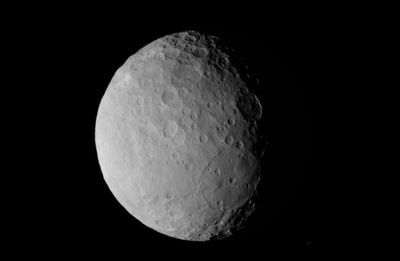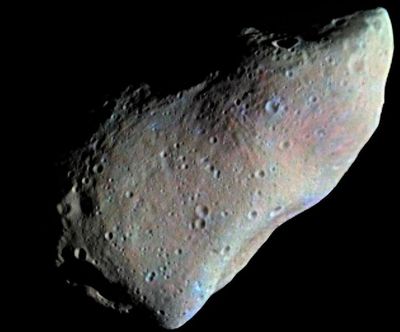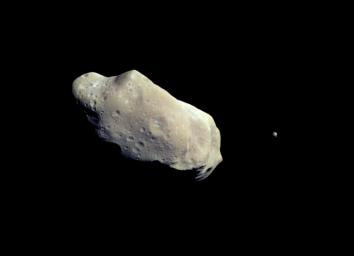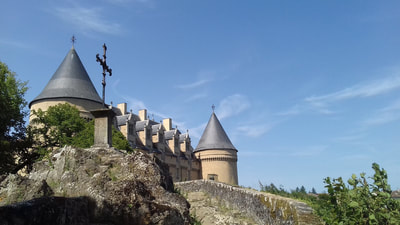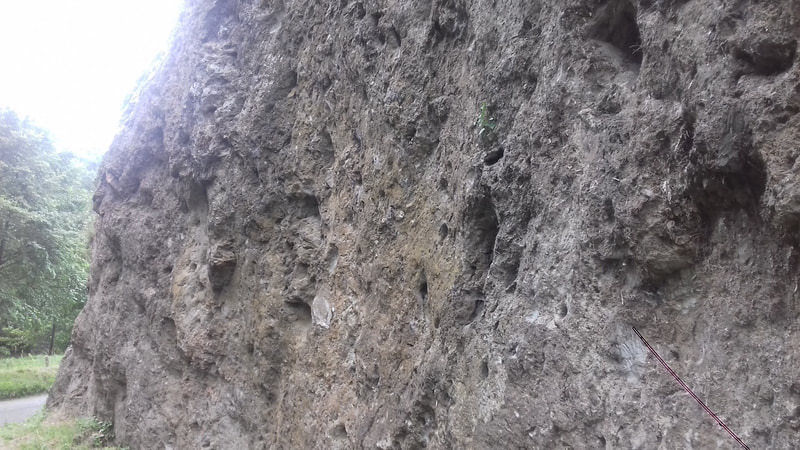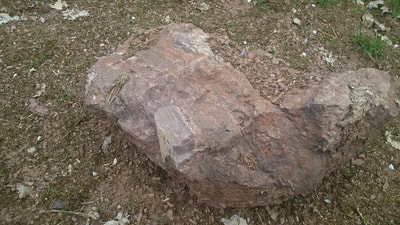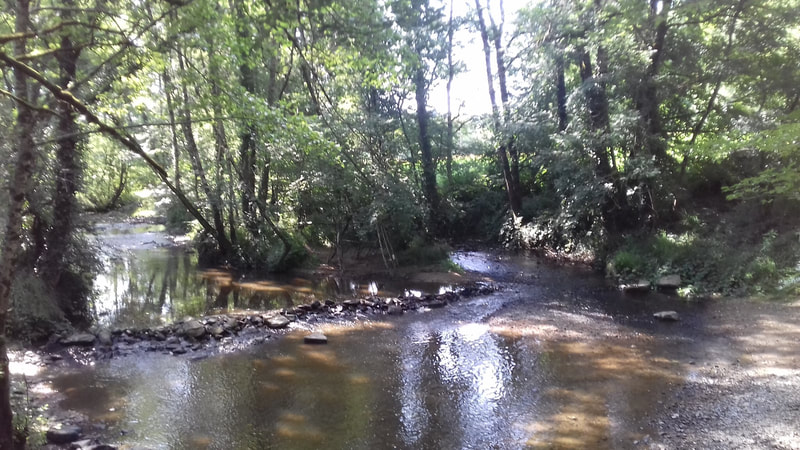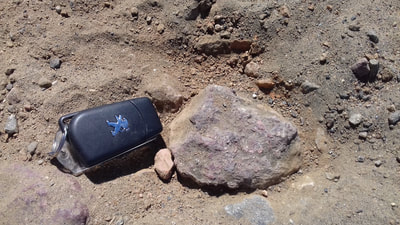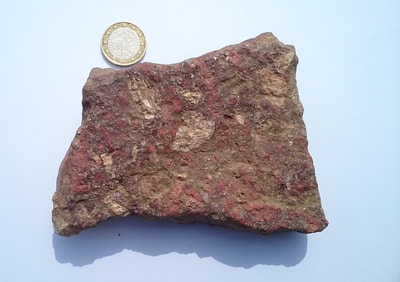Asteroids and the Triassic age impact in Limousin
Asteroids
Asteroids are the most common objects within the solar system and can range in shape and size from the at 952km in diameter spherical Ceres (the first asteroid to be discovered) down to irregular shaped chunks of just a few metres. There are also innumerable rocks smaller than our somewhat arbitrary lower limit, but we prefer to use the term fragment or meteoroid to designate these very small rocks/pebbles. It is meteoroids that are the source of meteors (shooting stars), where a meteoroid enters the Earth’s atmosphere and burns up due to frictional heating.
All asteroids are in heliocentric orbit, and as a group they can permeate just about any position in the solar system. Most are to be found orbiting the Sun between the orbits of Mars and Jupiter. However, a sizeable number are on eccentric orbits which means they cross the paths of the major planets, including our Earth. Objects which have perihelion (closest point to the Sun) distances of less than 1.3 AU are called Near Earth Asteroids (NEAs). AU is ‘Astronomical Unit’, which is the mean distance from the Earth to the Sun. Asteroids which can approach within 0.05AU of the Earth are defined as Potentially Hazardous Asteroids (PHAs).
Our primer on the solar system asteroids describes the locations, classifications, nature, form and origins of the asteroids. Written at an introductory level; equivalent to first-year undergraduate courses in astronomy, it provides a good introduction to these objects and discusses NEAs and PHA in detail.
Asteroids are the most common objects within the solar system and can range in shape and size from the at 952km in diameter spherical Ceres (the first asteroid to be discovered) down to irregular shaped chunks of just a few metres. There are also innumerable rocks smaller than our somewhat arbitrary lower limit, but we prefer to use the term fragment or meteoroid to designate these very small rocks/pebbles. It is meteoroids that are the source of meteors (shooting stars), where a meteoroid enters the Earth’s atmosphere and burns up due to frictional heating.
All asteroids are in heliocentric orbit, and as a group they can permeate just about any position in the solar system. Most are to be found orbiting the Sun between the orbits of Mars and Jupiter. However, a sizeable number are on eccentric orbits which means they cross the paths of the major planets, including our Earth. Objects which have perihelion (closest point to the Sun) distances of less than 1.3 AU are called Near Earth Asteroids (NEAs). AU is ‘Astronomical Unit’, which is the mean distance from the Earth to the Sun. Asteroids which can approach within 0.05AU of the Earth are defined as Potentially Hazardous Asteroids (PHAs).
Our primer on the solar system asteroids describes the locations, classifications, nature, form and origins of the asteroids. Written at an introductory level; equivalent to first-year undergraduate courses in astronomy, it provides a good introduction to these objects and discusses NEAs and PHA in detail.
Space probe photographs of the (main-belt) asteroids Ceres, Gaspra, and Ida (with tiny satellite of dactyl)
Images courtesy of NASA
Images courtesy of NASA
The Limousin asteroid impact of the Triassic Rhaetian age
The Earth has been struck by many asteroids and comets in its 4.6 billion-year history, and it will be hit again in the future. Perhaps the best-known impact is the Chicxulub, Mexico, incident 66 million years ago which presaged the death of the dinosaurs.
Less well known is the asteroidal impact which occurred just over 201 million years ago. An asteroid struck the area we now call the Limousin region of France, close to the small town of Rochechouart. This impact also coincided with a mass species extinction. Much closer, and more accessible, for European investigators the Limousin impact has been, and continues to be, one of the key focuses of our research. Our blog posts of August 2017 and April 2018 provide more introductions to this impact and the evidence visible today.
The Earth has been struck by many asteroids and comets in its 4.6 billion-year history, and it will be hit again in the future. Perhaps the best-known impact is the Chicxulub, Mexico, incident 66 million years ago which presaged the death of the dinosaurs.
Less well known is the asteroidal impact which occurred just over 201 million years ago. An asteroid struck the area we now call the Limousin region of France, close to the small town of Rochechouart. This impact also coincided with a mass species extinction. Much closer, and more accessible, for European investigators the Limousin impact has been, and continues to be, one of the key focuses of our research. Our blog posts of August 2017 and April 2018 provide more introductions to this impact and the evidence visible today.
Our Research
Whilst the primary aim of research is to seek to determine the characteristics of the impactor, e.g.
* What sort of asteroid was it?
* How big was it?
...we take a multi-disciplinary approach. Alongside the astronomical and geological aspects, we consider the paleoenvironment at the time of the impact and the effects, both locally and globally, of the impact of the impact on the flora and fauna of the epoch.
Whilst the primary aim of research is to seek to determine the characteristics of the impactor, e.g.
* What sort of asteroid was it?
* How big was it?
...we take a multi-disciplinary approach. Alongside the astronomical and geological aspects, we consider the paleoenvironment at the time of the impact and the effects, both locally and globally, of the impact of the impact on the flora and fauna of the epoch.
Our acclaimed publication, available from our shop, presents what we know about the impact itself and the object which fell upon the region. We review what France was like at the time; the plants animals and climate of the period; and the effects the strike had both on the local area and globally.
You can find our free-to-access gallery which provides many images of both the area and the geological rocks and formations which evidence the impact.
You can find our free-to-access gallery which provides many images of both the area and the geological rocks and formations which evidence the impact.

